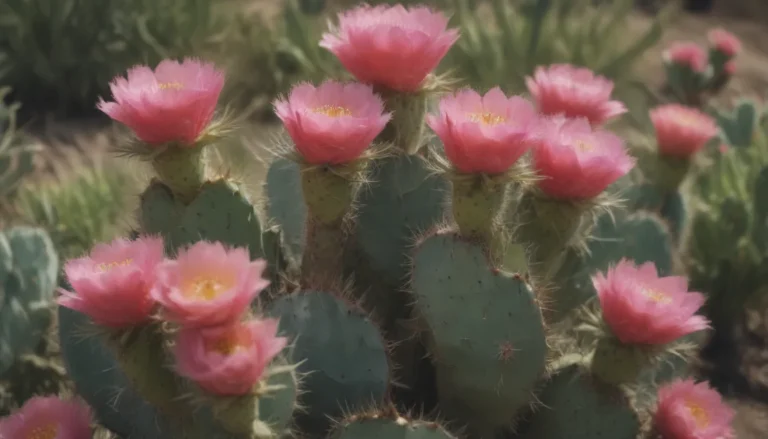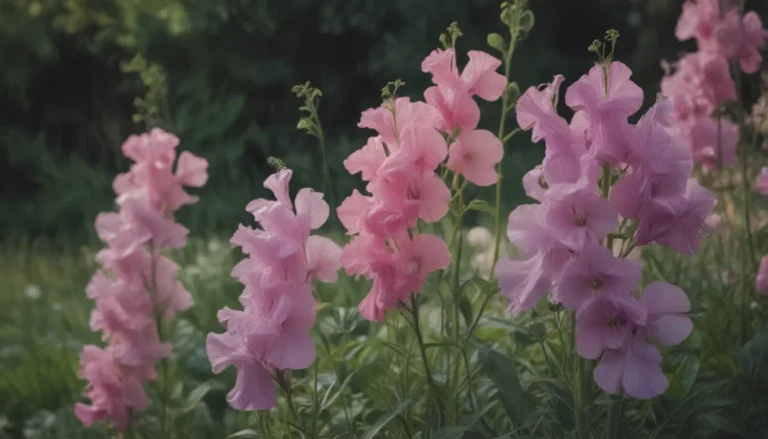The Ultimate Guide to Fragrant Trees for Your Landscape

Are you looking to add a touch of sweet fragrance to your yard? Fragrant trees can be the perfect solution to bring delightful scents right to your doorstep. Imagine walking through your garden and being surrounded by the soothing aroma of blooming flowers. While towering shade trees have their own majestic beauty, smaller flowering species are often the best choice when it comes to enjoying a fragrant garden. After all, what good is a fragrant flower if it’s way up in the air where you can’t even smell it?
If you’re considering adding fragrant trees to your landscaping, there are a few things to keep in mind. It’s essential to consider the preferences of your family members and neighbors, as not everyone may appreciate the same scents as you do. Some people may even have allergies to certain fragrances, so it’s always a good idea to consult with those around you before making your choice.
In this comprehensive guide, we’ll explore the top 10 fragrant trees that are perfect for your landscaping needs. Whether you’re looking for foliage, fruit, maintenance, flower color, or size, there’s a fragrant tree on this list for everyone. Let’s dive in and discover the beauty and fragrance these trees can bring to your outdoor space.
Apple Trees (Malus domestica)
Apple trees are not only known for their delicious fruit but also for their sweet-smelling fragrant flowers. With roughly 50 species in the Malus genus, you can choose from dwarf varieties to larger shade trees. ‘Honeycrisp’ is a popular variety that offers both fragrant flowers and edible fruit. Make sure to plant a suitable pollinator nearby to ensure a bountiful harvest.
- USDA Growing Zones:
- Color Varieties:
- Sun Exposure:
- Soil Needs:
Crabapple Trees (Malus spp.)
If you’re looking for profuse flowers in early spring, crabapple trees are an excellent choice. With a variety of sizes and flower color variations, these trees will bring a burst of color and fragrance to your yard. Consider fruitless cultivars if you prefer to avoid the mess created by dropping fruit.
- USDA Growing Zones:
- Color Varieties:
- Sun Exposure:
- Soil Needs:
Golden Chain Tree (Laburnu x watereri)
The golden racemes of Laburnum x watereri trees are a sight to behold, bursting onto the scene with incredible brilliance in the spring. These trees not only offer visual beauty but also pack a potent scent. Keep in mind that all parts of the golden chain plant are toxic, so it’s essential to plant them with caution.
- USDA Growing Zones:
- Color Varieties:
- Sun Exposure:
- Soil Needs:
Purple Leaf Sandcherry (Prunus x cistena)
Known for its striking purple leaves, the Purple Leaf Sandcherry offers sweetly fragrant white flowers in the mid-spring. This tall shrub is a great option for adding color and fragrance to your landscape, attracting birds with its attractive fruit.
- USDA Growing Zones:
- Color Varieties:
- Sun Exposure:
- Soil Needs:
Silk Tree (Albizia julibrissin)
Albizia julibrissin, also known as the Silk Tree, is a high-maintenance plant with pink, fragrant flowers that appear in June and July. This exotic-looking tree is a showstopper in any garden, with fern-like foliage and attractive peeling bark. Keep in mind that its invasive growth habit requires constant attention.
- USDA Growing Zones:
- Color Varieties:
- Sun Exposure:
- Soil Needs:
Crape Myrtle (Lagerstroemia spp.)
Unlike many flowering trees, Crape Myrtles bloom in late summer and early fall, filling the landscape with color. While most crape myrtle varieties are not fragrant, the Japanese type (Lagerstroemia fauriei) offers truly fragrant flowers with resistance to powdery mildew.
- USDA Growing Zones:
- Color Varieties:
- Sun Exposure:
- Soil Needs:
American Wisteria (Wisteria frutescens)
Wisteria is a climbing vine that can be trained to look and function like a tree. While Asian wisteria varieties are the most fragrant, they can be invasive in North America. Consider planting the American wisteria, which can grow up to 40 feet tall, for a fragrant and beautiful addition to your garden.
- USDA Growing Zones:
- Color Varieties:
- Sun Exposure:
- Soil Needs:
Cherry Plums (Prunus cerasifera)
Cherry plums are tall shrubs with notably fragrant flowers that appear in April. If you prefer a more shrubby plant, shorter cultivars are also available. Consider removing lower branches to give it a tree form for a striking addition to your landscape.
- USDA Growing Zones:
- Color Varieties:
- Sun Exposure:
- Soil Needs:
Sweetbay Magnolia (Magnolia virginiana)
Sweetbay magnolia ranges in size from 15 to 100 feet in height, emitting a lemony scent from its flowers in late spring. This versatile tree is perfect for a variety of climates, from colder regions where it grows as a multi-stemmed shrub to warmer areas where it thrives as a single-trunked evergreen tree.
- USDA Growing Zones:
- Color Varieties:
- Sun Exposure:
- Soil Needs:
Canadian Hemlock (Tsuga canadensis)
Canadian hemlock is a tall, fragrant tree that doesn’t flower but emits a sweet smell from its evergreen needles. This conifer is perfect for creating natural Christmas decorations and hedges, offering fragrance and beauty year-round.
- USDA Growing Zones:
- Color Varieties:
- Sun Exposure:
- Soil Needs:
In conclusion, fragrant trees can add beauty and aroma to your landscape, creating a peaceful and inviting outdoor retreat. With a variety of options to choose from, you can select the perfect fragrant tree to suit your preferences and the needs of your outdoor space. Whether you prefer the sweetness of apple blossoms or the exotic fragrance of silk trees, there’s a fragrant tree on this list that’s sure to delight your senses. Happy planting!





